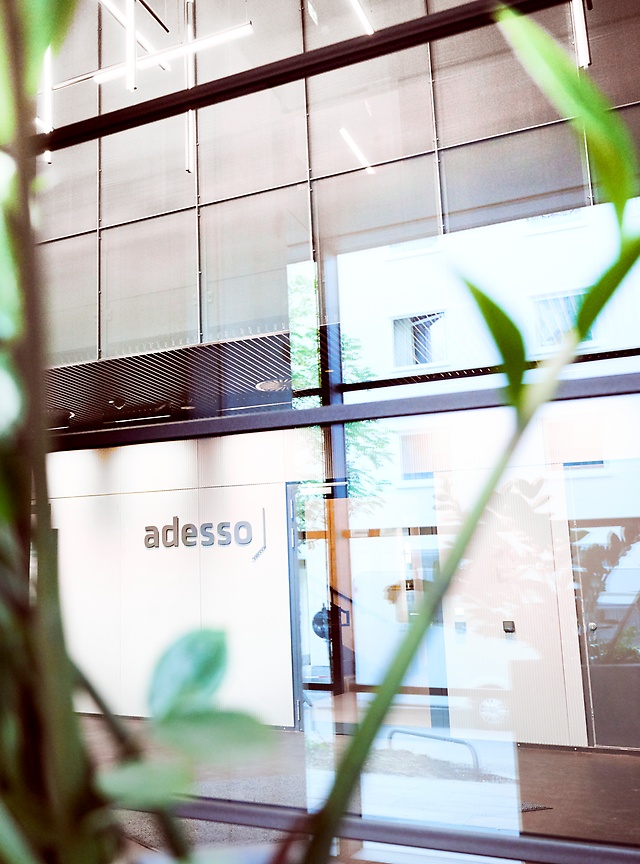6. June 2023 By Ellen Szczepaniak, Simon Bächle and Zoe Holdt
Integrating e-vehicles and utilising their flexibility in a virtual power plant
Without electric vehicles, there will be no transition in the transport sector – that is what we hear in the media over and over again. We also repeatedly hear that the power grid would currently not be able to withstand it if everyone that owns an electric vehicle was to charge at the same time. So what can be done? In this blog post, we would like to give you a more detailed look at the ‘vehicle-to-grid’ concept.
Vehicle-to-grid (V2G) – the idea behind it
To meet the challenge of potential grid overload, grid operators may need to modernise or even expand their infrastructure in order to ensure a nationwide supply of electrical energy. One way to reduce the load on the electricity grid is to schedule charging operations to take place at times when the overall electricity demand is lower, for example, at night or during periods when the load on the grid is low.
Another relevant factor is the use of renewable energies to generate electricity, as it is only when these energies are used that electric vehicles are actually more environmentally friendly than conventional combustion engines. By using solar or wind energy, electric vehicles can make an important contribution to reducing greenhouse gas emissions and help create a more sustainable future.
So how can electromobility be integrated into the electricity grid in a way that benefits it?
Vehicle-to-grid (V2G) is a concept in which electric vehicles (EVs) are used as mobile energy reserves or battery storage systems to do things such as feed electricity back into the grid when it is needed. This can help stabilise the power grid’s frequency and reduce dependence on fossil fuels. In addition, this concept offers EV owners the opportunity to earn money by flexibly selling their unused battery capacity to electric utility companies. The concept is based on the idea of allowing electric vehicles to charge bidirectionally.
With bidirectional charging, the electric vehicle is seen as a flexible energy storage system that can take in electricity from the grid at any time and also feed electricity back when there is a bottleneck in the grid. Bidirectional charging can be used in both stationary and mobile applications to increase the stability of the electricity grid and improve the efficiency of the electricity supply.
Effective charging management is essential for being able to exploit the synergies between flexible loads, electric vehicles’ storage capacities and the fluctuating energy supply from renewable energies. The aim of charging management is to enable an optimised flow of energy between the vehicle and the grid, taking into account various weighted influencing factors.
Making money as a driver by providing flexibilities?
We see that the flexibility an electric vehicle provides in the form of both batteries and charging management presents an opportunity to earn money in some regions. However, this depends on different factors: location, vehicle use, local regulations and the condition of the electric vehicle. If your interest has now been awakened, it is advisable to do thorough preliminary research to find out about potential sources of income as well as the associated costs and requirements before trying to use an electric vehicle to make money.
The applicable laws and regulations in the respective federal state or even region, however, are always crucial as regards the remuneration of flexibilities.
Here are some use cases that could lead to remuneration:
- 1. Feed-in tariff: Some countries or energy suppliers offer feed-in tariffs for electric vehicles that feed their surplus electricity back into the grid. These tariffs can vary depending on the country and the energy supplier.
- 2. Grid services: Electric vehicles can also be considered as part of a virtual power plant or aggregated electricity storage solution. In this case, it may be possible to generate revenue by making the vehicle’s battery available to stabilise the electricity grid, balance peak loads or provide other functions that benefit the grid.
- 3. Peak shaving: If an electric vehicle is charged during peak load times and its electricity is then fed back into the grid during more expensive periods of electricity usage, costs could be saved and there is a possibility to profit from it financially.
It is important to note that the exact conditions and feed-in tariffs vary from country to country and from energy supplier to energy supplier. It is advisable to check with local energy suppliers, grid operators or government agencies to get information on specific programmes or incentives in your region for feeding the electricity from electric vehicles back into the grid.
Electromobility as part of the virtual power plant
In a virtual power plant, various renewable energy sources, such as solar energy, wind energy and hydropower, are aggregated in order to ensure an electricity supply that is flexible and reliable. Electromobility can be integrated into a virtual power plant in several different ways:
- Electromobility as load management: Electric vehicles can be used to balance loads on the electricity grid by regulating their charging operations in a targeted manner.
- Vehicle-to-grid (V2G): Electric vehicles can be used as mobile energy reserves to feed electricity back into the grid when it is needed.
- Vehicle-to-home (V2H): Electric vehicles can be used as an emergency power source to cover the electricity demand in people’s own homes if the public grid fails.
Also interesting:
You can find more about virtual power plants and our services on our website. More exciting topics from the world of adesso can be found in our previously published blog posts.



